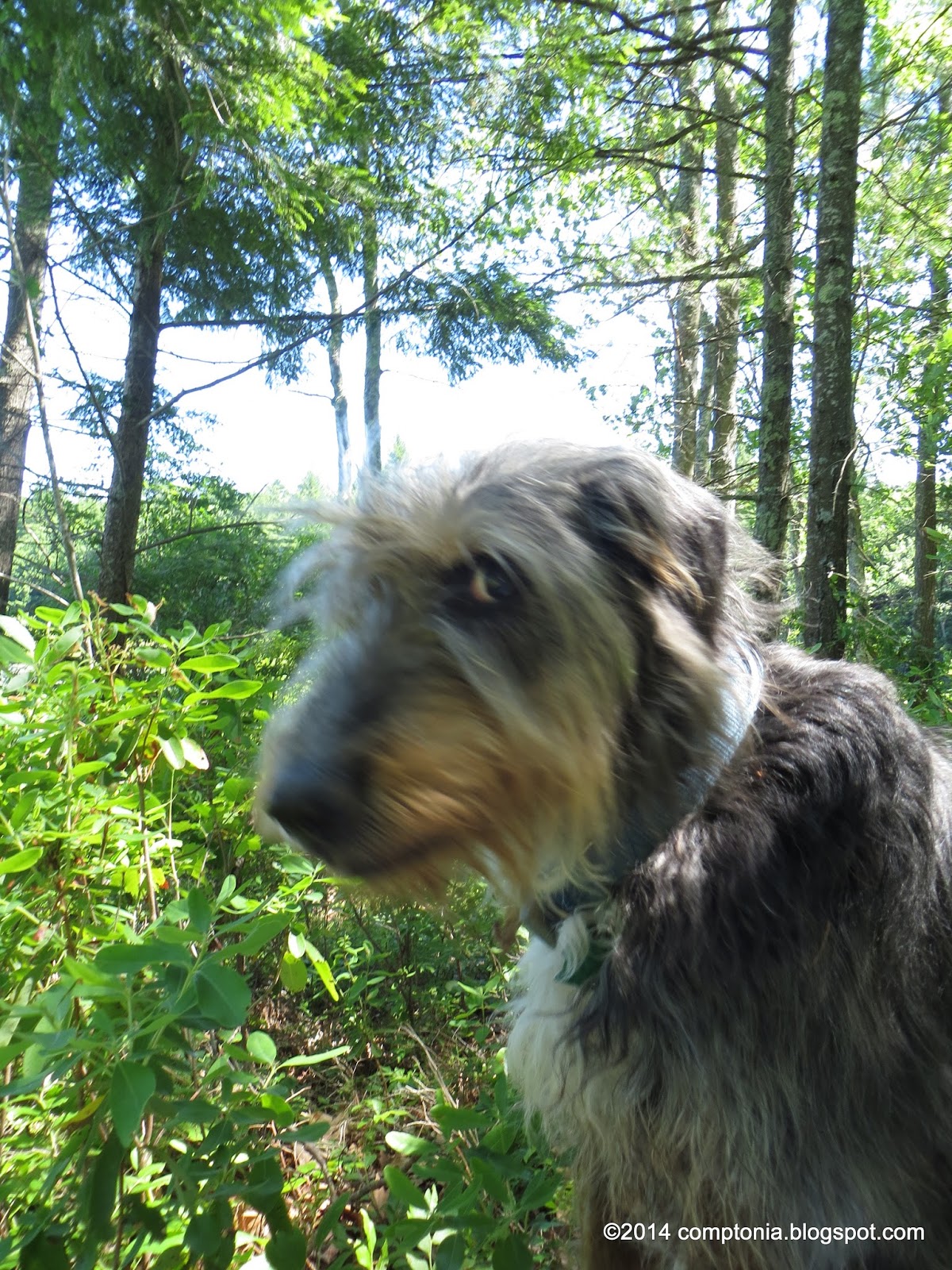And another big project is underway!
On the west edge of the Upper West Side,
between the perimeter fence and the driveway,
is a narrow rocky bank.
It is partially supported by an old stone wall
that has been gradually collapsing for decades.
At the base of the wall is a narrow strip of rocky garden,
with violets and daylilies, and other lovely blooming things.
"Where are these violets?" you might well be asking.
"And what daylilies?"
Fair question!
I think they're under here:
I think they're under here:
Buried beneath a tangle of bittersweet, grape,
forsythia, rubus...and did I mention bittersweet?
Every Spring I spend days hand-cutting and removing invasives
before the violets and daylilies (and I) become overwhelmed.
And prior to this year, I have always managed to enjoy
at least some flower garden.
But last Winter, when a lot of this sort of thing was going on:
there was an unfortunate incident involving the plowman.
The result was a sadly gouged-up garden
buried beneath a heavy layer of driveway gravel and stone.
It wasn't the plowman's fault; my driveway is terrible.
I am very fortunate to have a plowman, after long years without.
(Some years, I call my driveway The Snowshoe Highway.)
But I must admit, it was disheartening
to imagine what the "garden" would look like come Spring.
And sure enough, almost all the plants appearing this Spring
were those hardy and tenacious and prolific invasives.
So, when I recently hired the brushcutting fellow,
one of his first assignments was to take 99% of this bank vegetation
Right Down To The Ground.
Here's a progress shot, looking north after the first session.
See the bright green area along the fence to the left?
That's the edge of the terrace garden.
For scale, that fence is 6-foot woven wire with 2x4" openings.
Which makes this amazing squash plant about 7 feet tall so far:
It's a Sow True Seed winter squash, called
The description says each squash can weigh 25-40 pounds!
Do you think I should make little hammocks to support the
two baby squash(!) already growing high up on the fence?
I'm thinking maybe.
~~~
Today the brushcutting was finished.
When my younger helper comes on Wednesday,
he can pull all the wilted (by then) cuttings off the bank
and pile them up on the Very Raised Bed.
I am loving having a way to make good use of such material!
Now, I would love to have your advice, all you lovely gardeners!
I'd like to plant the whole bank with perennials this Autumn.
Any recommendations for plants?
What are your undemanding perennial favorites?
I'm in Zone 5, and the bank is rocky (of course).
It gets a lot of afternoon sun.
I'm hoping for plants that will spread densely,
but not grow tall enough to shade the terrace garden above.
So far, I'm considering daylilies and iris
(tall, so they would be planted at the base of the stone wall),
and several varieties of shorter coreopsis along the upper bank.
I've never grown coreopsis; not even dyer's coreopsis.
It is an annual, and since it is so difficult to garden here,
the return of perennials is important. To my sanity.
But...it seems there are now perennial coreopsis,
reputed to be equally hardy and even more colorful.
And perhaps a dye source! Worth a try.
That's all I've come up with for possibilities so far.
Please, please feel free to make suggestions.
Prepping and planting this garden is going to be a lot of work.
Any guidance to making it successful will be much appreciated!
~~~~~
When my younger helper comes on Wednesday,
he can pull all the wilted (by then) cuttings off the bank
and pile them up on the Very Raised Bed.
I am loving having a way to make good use of such material!
Now, I would love to have your advice, all you lovely gardeners!
I'd like to plant the whole bank with perennials this Autumn.
Any recommendations for plants?
What are your undemanding perennial favorites?
I'm in Zone 5, and the bank is rocky (of course).
It gets a lot of afternoon sun.
I'm hoping for plants that will spread densely,
but not grow tall enough to shade the terrace garden above.
So far, I'm considering daylilies and iris
(tall, so they would be planted at the base of the stone wall),
and several varieties of shorter coreopsis along the upper bank.
I've never grown coreopsis; not even dyer's coreopsis.
It is an annual, and since it is so difficult to garden here,
the return of perennials is important. To my sanity.
But...it seems there are now perennial coreopsis,
reputed to be equally hardy and even more colorful.
And perhaps a dye source! Worth a try.
That's all I've come up with for possibilities so far.
Please, please feel free to make suggestions.
Prepping and planting this garden is going to be a lot of work.
Any guidance to making it successful will be much appreciated!
~~~~~













